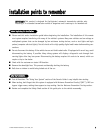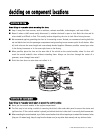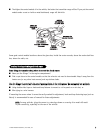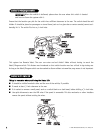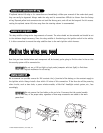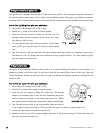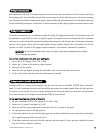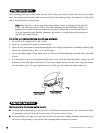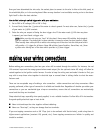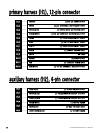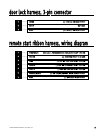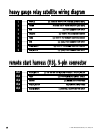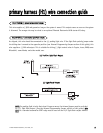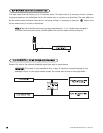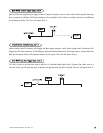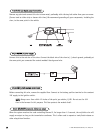
© 2005 Directed Electronics, Inc. Vista, CA
1133
Once you have determined the wire color, the easiest place to connect to the wire is often at the kick panel, at
the windshield pillar, or in the running board. When an easy location is not available, running a wire to the dome-
light itself is often the best solution.
HHooww ttoo ffiinndd aa ddoooorr ppiinn sswwiittcchh ttrriiggggeerr wwiirree wwiitthh yyoouurr mmuullttiimmeetteerr::
1. Set to DCV or DC voltage (12V or 20V is fine).
2. In most Fords, fasten the (-) probe of the meter to chassis ground. In most other cars, fasten the (+) probe
of your meter to (+)12V constant.
3. Probe the wire you suspect of being the door trigger wire. If the meter reads (+)12V when any door
is opened, you have found a trigger wire.
NNOOTTEE::
Make sure the wire you use “sees” all the doors! Some newer GM vehicles lack standard-
type pin switches. The dome light in these vehicles is turned on when the door handle is lifted.
These usually have a blue/white or white wire coming out of the door into the kick panel which
will provide a (-) trigger for all doors. Some GM vehicles (some Cavaliers, Grand Ams, etc.) have
a yellow wire coming out of the door which provides a (+) door trigger.
mmaakkiinngg yyoouurr wwiirriinngg ccoonnnneeccttiioonnss
Before making your connections, plan how your wires will be routed through the vehicle. For instance, the red
12V constant input and the orange ground-when-armed output (for the optional starter kill relay) will often be
routed together to the ignition switch harness. In order to keep the wiring neat and make it harder to find, you
may wish to wrap these wires together in electrical tape or conceal them in tubing similar to what the manu-
facturer used.
There are two acceptable ways of making a wire connection - solder connections and crimp connectors. When
properly performed, either type of connection is reliable and trouble-free. Regardless of whether you solder your
connections or you use mechanical-type crimp-on connections, ensure that all connections are mechanically
sound and that they are insulated.
Cheap electrical tape, especially when poorly applied, is not a reliable insulator. It often falls off in hot weather.
Use good-quality electrical tape or heat shrink.
■ Never twist-and-tape the wires together without soldering.
■ Never use “fuse taps”, as they can damage fuse box terminals.
If you use tapping connectors such as 3M T-Taps (not to be confused with Scotch-Locks), avoid using them in
higher-current applications (constant 12V, ground, etc.). Some tapping connectors are inferior in quality and
should be avoided.



